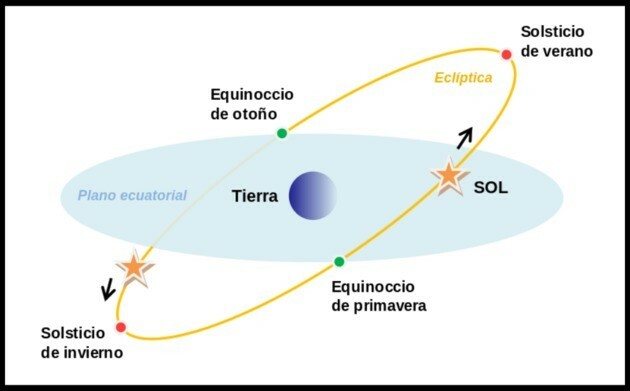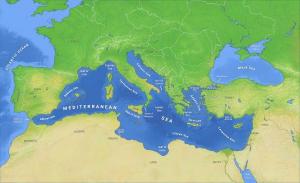Difference between solstice and equinox
The solstice occurs when the sun is closer to or further from one of the earth's hemispheres, increasing the length of the day in one part of the world, and decreasing its duration in the other. In the case of the equinox, the sun is on the equator, so day and night in both hemispheres have the same duration.
Both the solstice and the equinox occur twice a year, marking the beginning of the seasons. The solstice occurs during the summer and winter, while the equinox occurs at the beginning of spring and fall.
| Solstice | Equinox | |
|---|---|---|
| Sun position | The sun is at the most distant point on the equator line. | The sun is at the point closest to the equator. |
| Sun rays | The Earth receives a greater amount of light in one of the hemispheres. | The solar rays reach the intertropical zone with greater intensity, causing light and heat to reach both hemispheres in the same way. |
| Date |
|
|
| Duration of the day | Summer solstice: longest day. Winter solstice: shortest day. |
Day and night have the same duration during an equinox. |
| Etymology | From Latin solstitium, made of Sun (sun) and sistere (stopped or static), and that means 'quiet sun'. | From Latin aequinoctium, made of aequus (equal) and nox (night), and that means 'equal night'. |
Both the equinox and the solstice occur twice a year, marking the entrance of the seasons. Sunny days are longest during the summer solstice, while nights are longest during the winter solstice. The equinox occurs at the beginning of autumn and spring, when the sun is closest to the equator.
The solstice lasts for several days, while the equinox occurs at a specific point in time.
These phenomena occur because the Earth follows an elliptical path, with its axis inclined, which which causes sunlight to reach the Earth's surface at different angles during its rotation.

What is the solstice?
During a solstice the sun is closer to one of the hemispheres, causing the day to be longer.
The word solstice comes from Latin solstitium, which means 'still sun'. During the solstice, the sun is closer to one of the hemispheres, causing the day to be longer, while the night is longer in the other hemisphere.
June 21 is the summer solstice in the northern hemisphere, and the winter solstice in the southern hemisphere. In the same way, on December 21 the winter solstice occurs in the northern hemisphere, and the summer solstice in the southern hemisphere.
What is the equinox?
During an equinox the sun is positioned on the equator, causing the day and night to last the same.
The word equinox has its origin in Latin aequinoctium which means 'equal night'. The equinox occurs when the sun is positioned exactly on one point on the equator, so light and heat are similarly distributed in both hemispheres. This causes the day and night to last the same.
The equinox that marks the beginning of spring in the northern hemisphere, and autumn in the southern hemisphere, generally on March 20. The equinox that marks the beginning of autumn in the northern hemisphere, and spring in the southern hemisphere, generally on September 22.
Solstices and equinoxes until the year 2025
| Equinox | Solstice | Equinox | Solstice | |
|---|---|---|---|---|
| Year | Spring (north) Autumn (south) |
Summer (north) Winter (south) |
Autumn (north) Spring (south) |
Winter (north) Summer (south) |
| 2018 | 20/03 | 21/06 | 23/09 | 21/12 |
| 2019 | 20/03 | 21/06 | 23/09 | 22/12 |
| 2020 | 20/03 | 20/06 | 22/09 | 21/12 |
| 2021 | 20/03 | 21/06 | 22/09 | 21/12 |
| 2022 | 20/03 | 21/06 | 23/09 | 21/12 |
| 2023 | 20/03 | 21/06 | 23/09 | 22/12 |
| 2024 | 20/03 | 20/06 | 22/09 | 21/12 |
| 2025 | 20/03 | 21/06 | 22/09 | 21/12 |
Learn more about the Difference between spring, summer, fall and winter.



